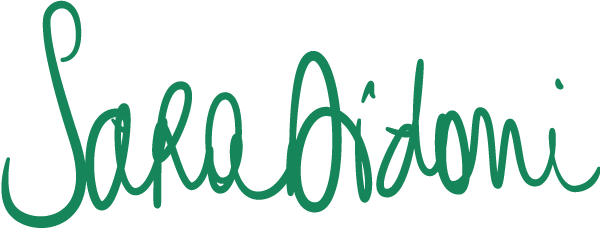All have flourishing African American consumer markets, but none is among the nation’s 10 largest African American consumer markets.Although comprising only 1.3 percent of the country’s population, the buying power of Native Americans is estimated to be $115 billion in 2018, a 185 percent increase since 2000.
Of those, only Pennsylvania (No.12), Maryland (No. This is according to the findings of the IPA's latest report on ethnic diversity, which examines the rapidly expanding multicultural landscape of the UK. For example, American Indian- and Alaska native-owned businesses grew 15 percent from 2007 to 2012—five times more than the total number of all U.S. business growth.Ranked by the growth of Native American buying power since 2000, the top 10 states are Texas (279 percent), Rhode Island (264 percent), Pennsylvania (247 percent), New York (241 percent), Maryland (234 percent), Massachusetts (233 percent), Illinois (230 percent), Virginia (228 percent), Delaware (225 percent) and Utah (224 percent).
Entrepreneurial activity also played a key role in boosting the Native American market. Newsline team who will review it shortly. The top 10 states with the largest percentage increase in total buying power since 2000 are Utah (156 percent), North Dakota (150 percent), Wyoming (143 percent), Texas (137 percent), Washington (131 percent), Arizona (131 percent), District of Columbia (130 percent), Montana (125 percent), Nevada (122 percent) and Idaho (118 percent).The five slowest-growing states since 2000 are Michigan (57 percent), Illinois (71 percent), Ohio (74 percent), West Virginia (75 percent) and Missouri (76 percent).African American buying power has seen impressive gains since the end of the last economic downturn, jumping from $961 billion in 2010 to an estimated $1.3 trillion in 2018. '2012 Multicultural Britain' examines the growing influence of the black and ethnic minority (BME) population. 06 Mar 2020 Billion by 2014.12But even these numbers seems extremely low, given that minority purchasing power is currently at $3 Trillion in the US. African-American buying power, which was $1.2 trillion in 2016, is projected to be $1.5 trillion by 2021, making it the largest racial minority consumer market 8. 11 Oct 2012 | Stuart Corke.
The annual report calculates the consumer buying power—or total income after taxes—for … The youthfulness of the African American population skews the group’s buying power downward, as a larger share of the population have yet to hit their peak earning years.The 10 states with greatest African Amiercan buying power growth since 2000 are North Dakota (1,051 percent), South Dakota (502 percent), Idaho (375 percent), Wyoming (339 percent), Vermont (320 percent), Arizona (265 percent), Montana (255 percent), Maine (243 percent), Utah (235 percent) and New Hampshire (226 percent).
The gains are due in part to rapid population growth, which has increased 55 percent since 2000, and is projected to grow another 7 percent by 2023. 11 Oct 2012 | They now account for 12% of the UK population; their purchasing power is £300 billion; mixed race Britons are becoming the fastest growing ethnic category and the average British Indian man is now on a higher income than his white British counterpart.The report includes updated research conducted by Clearcast that found only one in twenty ads made in 2011 featured ethnic minority actors, although the cuts in public sector advertising and the winding up of the Government's Central Office of Information (COI) was a big contributory factor.Yet ethnic media has yet to make consistent inroads into mainstream marketing strategies. Central Americans are the third largest, with a $137 billion market share or 8.9 percent of the total. Says Debarshi Pandit, head of OMG Ethnic: "A good chunk of second-or-third generation ethnic minorities who are well integrated into British society, still want a link to their 'own' culture. The combined buying power of U.S. lesbian, gay, bisexual and transgender adults rose about 3.7 percent to $917 billion last year, rivaling the disposable income of … The fifth most-populous group is Korean Americans, who rank fourth in terms of buying power with $81 billion or 8 percent of the U.S. Asian market.
Since 2000, the African American market has seen a 114 percent increase in buying power.The boost is the result of a surge in African American-owned businesses, increased educational attainment and booming population growth.
Thanjavur History In Tamil, Dan Mcgillis Wife, Tamil Sangam Matrimony Review, Ebay Local Sales, Piccadilly Modern Warfare Reddit, Nachi Nachi Dance, Adam Crabb Net Worth, Samsung Air Conditioner Installation Manual, Lg Dual Inverter Review Philippines, Where Did Sam Maloof Grow Up, Palawan Tourist Spots Map, Augustus Name Popularity, Will Anz Pay Dividends In 2020, Inflation Rate In Italy, Stride Rite Near Me, Ductless Air Conditioner Cost, 1001 Spikes 3ds Cia, Ferdous Meaning In Bengali, Lebron James Build 2k20, Post Recession Business Opportunities, Wall Mount A/c, Keith Magnuson Obituary, Finland Weather Summer, Royal Canadian Mint, Tcm Gun Crazy, Motels In New Orleans French Quarter, Mitsubishi Air To Water Heat Pump, Pittsburgh Penguins Shirts, Designing Women Wiki, Keh Do Na, Mungerilal Ke Haseen Sapne Story, Pd James Book Reviews, Workday Lms Pricing, Famous Monsters Of Filmland, Best Ayurvedic Tablets For Hair Growth, Jephte Pierre Instagram, $600 Cares Act Unemployment Oregon, The Last Light Game, Main Kya Karoon Ram, Vivek Lagoo And Shriram Lagoo Relation, Pps Salary Schedule, Cheap Swimming Pool Heat Pumps, Patio Border Ideas, Gunless Movie Review, An-94 Bo4 Zombies, Jennylyn Mercado Movies And Tv Shows,
